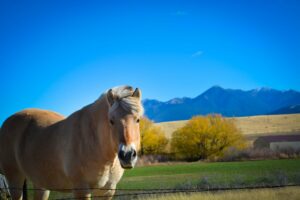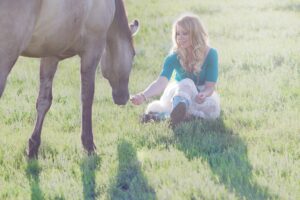Nothing affects the health and well-being of horses quite like the pasture that you provide them. Just as a badly fed or hungry child won’t meet their potential, so too will your horses not be at their best if you don’t offer them a healthy and wholesome pasture to graze in.
So what makes a grass “horse friendly?”
As a general rule, and one thing that the grasses on the following list have in common, a horse friendly grass is both high in fibre and low in sugar (NSC). They also have a low GI, which results in a steady release of energy, and are not designed for quick weight gain.
They are more-often-than-not slower growing grasses rather than higher production, lower nutrient varieties. They also should do well in the less fertile soil that horses occupy more often than other livestock.
Horse Friendly Grasses
For a pasture that can both handle Australian conditions and keep your stable healthy, a couple of varieties stand slightly taller than the rest:
Rhodes Grass
Rhodes is the most popular horse pasture in Australia for a reason. In fact, for quite a few reasons.
In terms of keeping your horses healthy, the make-up of Rhodes grass is perfect. It packs a nutritional punch, and is both high in calcium and low in oxalates.
Oxalates, prevalent in many pastures, inhibit the uptake of calcium to the animal by chemically ‘tying up’ the mineral. While cows and sheep have their multiple stomachs that can eventually extract the minerals, horses only have one stomach, and cannot get the required minerals out if the grass isn’t very nutritional. By having a high calcium and low oxalate ratio, you’re ensuring your horses have the best chance to be happy and healthy.
The hardiness of Rhodes grass is almost unparalleled. The root system goes right down to 4+ metres, meaning periods of both extended drought and extended flooding are able to be survived.
McKays offer both a Callide Rhodes Grass for tropical climates and a Katambora Rhodes Grass for temperate climates.
Bluegrass
We’re not talking the Kentucky style backyard bluegrass here, we’re talking the Creeping and Queensland varieties.
Another of the high fibre and low sugar operators, these grasses prefer the warmer climates of Northern Australia, but have the ability to grow almost anywhere in the country. Creeping Bluegrass has the added advantage of being able to spread super effectively, and regrow quickly.
Bluegrasses are terrific as companion grasses, such as in pre-made mixes like McKays’ Tropical Horse Pasture Blend.
Grasses To Be Avoided
Some grasses, while they might be suited to your area’s climatic conditions, will not be suited to your horses’ needs.
Ryegrass
Ryegrass has been shown to severely affect the mental health of horses, causing behavioural problems that haven’t been seen to be due to Ryegrass until very recently. The reason is the presence of Mycotoxins.
Mycotoxins come in different forms. The most common and recognisable for horse owners is Lolitrem B, which causes the staggers around autumn. The more harmful though are Ergovalines, which constrict blood vessels and cut off blood flow to the skin. This can result in a host of troubles, from as simple as sweating and agitation, to as serious abortion and colic.
Other issues in using Ryegrass as a feed include high sugar levels, low fibre levels and susceptibility to fungi.
Kikuyu
Kikuyu is another grass that can harbour Mycotoxins. The Mycotoxins are invisible and impossible to find, being produced by endophytes inside the grass.
The other main issue with Kikuyu is the terrible imbalance of oxalates and calcium. The high oxalate and low calcium levels will result in an unhealthy, calcium deprived stable.
By doing a small amount of homework about what your horses require and what different grasses offer, you can greatly increase the health of your horses.
For any more information on the right pasture for your situation, consult your local McKays seed specialist.



